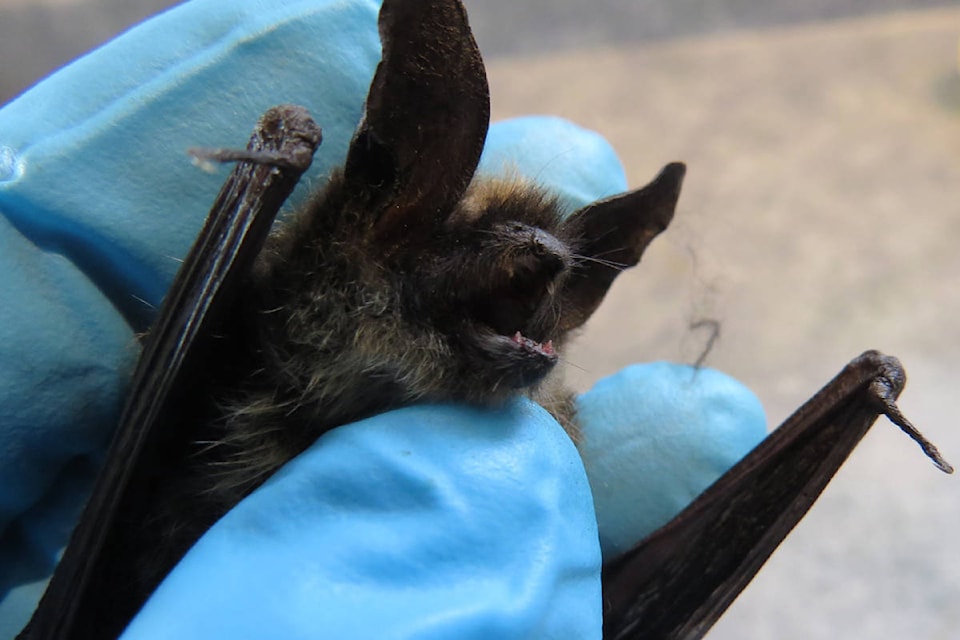Bat researchers in B.C. say public help is essential for monitoring the spread of the deadly white-nose syndrome.
It’s the second time this year the BC Community Bat Program has reached out to media, asking the public to report bat sightings, regardless if the animal is dead or alive.
White-nose syndrome (WNS) is a fungus that’s “very worrisome” for the health of B.C. bats. The disease, which has nearly 100 per cent mortality rate for some species of bats, has been confirmed east and west of the Cascade Mountains in Washington State, about 150 kilometres south of White Rock.
Detection of WNS in the province is challenging because local bats hibernate alone or in small groups across the province, a news release said.
“To monitor the spread of the disease, we need more eyes on the ground. Outdoor enthusiasts and homeowners with roosts on their property may be the first to find evidence of trouble,” said BC Community Bat Program regional co-ordinator Danielle Dagenais.
RELATED: Bat sightings on Semiahmoo Peninsula spark worries of white-nose syndrome
Signs of the disease include unusual bat activity in winter and the appearance of dead bats outdoors.
“We are encouraging the public to report dead bats or any sightings of winter bat activity to the BC Community Bat Program toll-free phone number, website, or email… Bat carcasses must be retained so that they can be collected and submitted for testing for white-nose syndrome. This would provide the earliest indication of the presence of the disease in BC,” Dagenais said.
Local bats often hibernate by themselves in a woodpile or basement entry. If possible, the release said, sleeping bats should be left alone - “Keep your distance, snap a photo, and report to the BC Community Bat Program.”
Information on how to safely move a bat can be found at www.bcbats.ca.
“Remember to never touch a bat with your bare hands.”
Bats coming out of hibernation before spring can be a sign of trouble, but that’s not always the case, the release noted.
“Bats are also occasionally spotted flying on relatively warm winter days or evenings. Healthy bats may wake up to drink or even eat, if insects are active. Enjoy these sightings and remember to let us know when and where winter bat activity was observed.”
Residents can report bat sightings to vancouver@bcbats.ca, www.bcbats.ca, or 1-855-922-2287 ext. 11.
